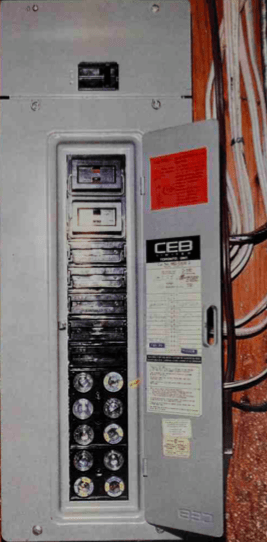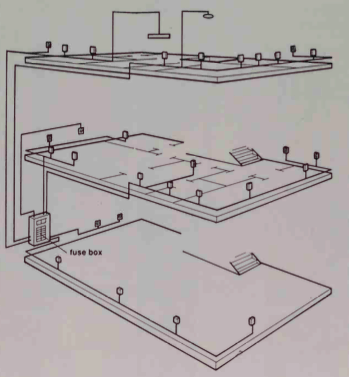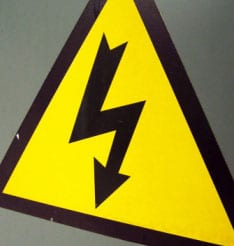Electrical System
Understanding how your electrical system works will provide you with a healthy respect for electricity while minimizing your fear of any improvement or repair work.
Working with electricity need not be hazardous as long as strict safety practice are followed. Electrical work must be done to code. Government electrical codes regulate the materials that can be used and how those materials should be used. Some municipalities prohibit anyone but a qualified electrician from handling any electrical work, while others demand an electrical inspection before your repairs or improvement can begin.

Always make sure the power is shut off before handling any wires. Test the outlet to make sure there’s no electrical feed before beginning any work. And always use only approved parts for an electrical system.
Electricity is powerful and deserves respect. Should you doubt your abilities to handle any electrical repair, call in a licensed electrician. However, your fear of electricity shouldn’t be so great that it will prevent you from changing a blown fuse.
Electricity travels into the home under pressure, measured in voltage. Most homes have an electrical power pressure of 120/240 volts. The electricity enters the home from electrical wiring outside through the meter, which measures a home’s electrical service use, and into the service panel, usually located in the basement. From the panel, charged power surges through a series of circuits to the various outlets in your home. Spent power returns through a different wire on the same circuit and out into the service entrance wires or to the earth by means of a ground.
While electrical pressure is measured in volts, the rate at which the power is distributed to an outlet is measured in amperes. The number of amps is limited by the size of the wire the power flows through. A larger wire allows a larger amperage to travel to an outlet. However, excess power in a wire can cause that wire to overheat. Therefore the fuse size must match the wire size to prevent fires. A 15-amp fuse must be used with wire meant to carry 15 amps of power. Any excess amperage running through the cable will cause the fuse to blow. A larger fuse on a 15-amp service will allow excess power through the wire, creating a fire hazard.
Most home appliances operate on a 120-volt service, although some heavy-duty appliances such as stoves and driers need a 240-volt service. These heavy-duty appliances have their own circuits.
A circuit is a length of wire that carries a current to a number of outlets in the house.
Each circuit is safeguarded by a fuse or a circuit breaker which will blow or trip if excess power is admitted to the circuit. Too many outlets in use on one circuit will create excess power. For example, in a 15-amp circuit, the amperage of all the appliances in use on that circuit cannot exceed 15. If the number exceeds 15 amps and the appliances are turned on, a fuse will blow every time.
Different appliances have different amperage ratings, and all it takes to blow a fuse is to turn on two high-amperage appliances. Should you find your fuses blow frequently, an improved electrical service is in order. A kitchen, for example, needs at least two circuits, other than those for the stove and refrigerator, since several small appliances are often in operation at the same time.
Older homes, particularly those over 20 years old, usually need an updated wiring service to handle the electrical draw of ail our modern appliances.
The ideal electrical service in today’s homes is a 200-amp service This should be plenty to handle all your electrical needs.
Other than frequently blown fuses, a poor electrical service can be recognized by lights flickering when appliances are turned on, appliances that don’t operate at full power, and the use of too many extension cords.
If your house displays any of these symptoms, improvement to your electrical system is in order.
ELECTRICAL CIRCUITS EXPLAINED

A series of circuits supply electricity to the outlets in your home. If fuses constantly blow, lights flicker, or you use too many extension cords, you should consider installing extra circuits to spread the electrical load. Circuits should be designed so that only 1650 watts are carried on a 15 amp fuse.
